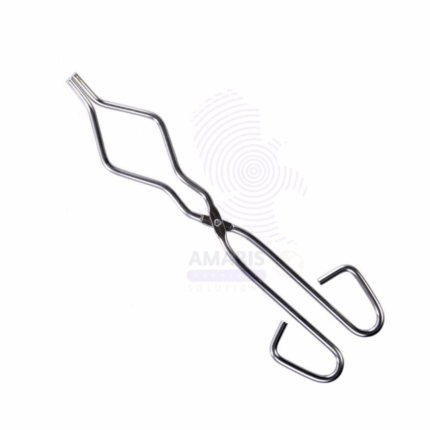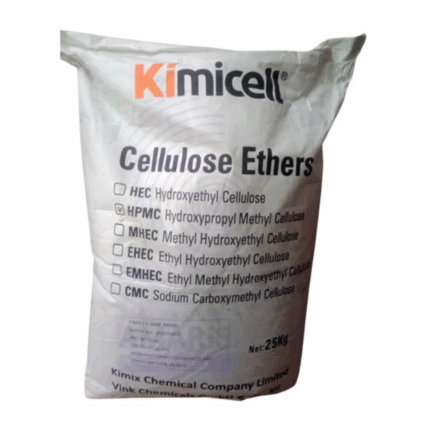
Mineral Lick Rock Salt Extra Pure
$ 20.21 Original price was: $ 20.21.$ 20.13Current price is: $ 20.13.

Crucible Tongs
$ 19.35 Original price was: $ 19.35.$ 19.08Current price is: $ 19.08.
Camcure
Whatsapp Order
Camcure is a specialized epoxy hardener designed to be used in conjunction with epoxy resins to facilitate curing, improve mechanical strength, and enhance chemical resistance. It typically appears as a clear to pale yellow liquid with low viscosity, enabling easy mixing with resin systems. This hardener is widely used in coatings, adhesives, composites, and industrial applications requiring durable, tough, and chemically resistant cured products. Camcure 9115X70 promotes rapid curing at ambient or elevated temperatures and offers excellent adhesion to a variety of substrates including metals, plastics, and concrete.
Description
Table of Contents
Toggle
Camcure (Hardener)
Primary Uses
- Industrial Coatings
- Used as a curing agent in epoxy coatings for metal protection, machinery, and structural steel to provide corrosion resistance and surface hardness.
- Applied in flooring systems where chemical resistance and mechanical durability are critical, such as in factories and warehouses.
- Adhesives and Sealants
- Serves as a hardener in two-component epoxy adhesives offering strong bonding for metals, plastics, wood, and composites.
- Used in sealants for structural and electronic assembly applications requiring high chemical and heat resistance.
- Composites and Laminates
- Employed as a curing agent in the production of composite materials used in automotive, aerospace, and marine industries to enhance strength and durability.
- Electrical and Electronics
- Used in encapsulation and potting compounds to protect sensitive electronic components from moisture, dust, and mechanical stress.
Secondary Uses
- Repair and Maintenance
- Used in epoxy repair mortars and patching compounds for concrete and metal surfaces.
- Employed in tooling and mold-making applications to cure epoxy molds with high dimensional stability.
- Art and Craft
- Used by artists and craftsmen for epoxy resin art pieces, coatings, and jewelry where clarity and hardness are desired.
KEY PRODUCT FEATURES
1. Basic Identification Attributes
- Chemical Name (IUPAC): Polyamine-based epoxy curing agent (exact composition proprietary)
- Common/Trade Name: Camcure 9115X70
- CAS Number: Proprietary blend (specific CAS varies by formulation)
- HS Code: 3824.99.99 (Other chemical products and preparations)
- Molecular Formula: Not applicable (mixture)
- Synonyms:
- Epoxy Hardener 9115X70
- Camcure Epoxy Curing Agent
- Polyamine Hardener
2. Physical & Chemical Properties
- Physical State: Liquid
- Color & Odor: Clear to pale yellow; amine-like odor
- Viscosity: Low to medium viscosity, suitable for mixing and application
- Density: Approx. 0.95–1.05 g/cm³ (varies by batch)
- Solubility: Miscible with epoxy resins; insoluble in water
- Flash Point: Typically above 100°C (varies by formulation)
- pH: Alkaline (amine functional groups)
- Stability: Stable under recommended storage conditions; sensitive to moisture
3. Safety & Hazard Attributes
- Hazard Class (GHS):
- Skin corrosion/irritation: Category 2
- Serious eye damage/irritation: Category 2
- Respiratory sensitization: Category 1 (potential sensitizer)
- NFPA Ratings:
- Health: 2
- Flammability: 1
- Reactivity: 0
- Exposure Limits: No specific OSHA/ACGIH PELs; avoid inhalation of vapors and skin contact
- Toxicity: Moderate; may cause skin sensitization and respiratory irritation
- Reactivity: Reacts with epoxy resins; avoid strong acids, oxidizers, and moisture
4. Storage & Handling Attributes
- Storage Conditions: Store in a cool, dry, well-ventilated area away from moisture and heat sources
- Container Type: Sealed metal or plastic containers compatible with amines
- Shelf Life: Typically 12 months if stored properly
- Special Handling: Use personal protective equipment (PPE); avoid skin contact and inhalation
5. Regulatory & Compliance Attributes
- FDA Status: Not applicable for food contact
- REACH Compliance: Complies with relevant chemical registration requirements
- Transportation: Classified as a hazardous material due to corrosivity and health risks (check local regulations)
- Waste Disposal: Dispose in accordance with local environmental and hazardous waste regulations
6. Environmental & Health Impact
- Ecotoxicity: May be toxic to aquatic life; avoid release to environment
- Persistence: Biodegradable over time but persistent in high concentrations
- Bioaccumulation: Not expected to bioaccumulate significantly
- Carcinogenicity/Mutagenicity: Not classified as carcinogenic or mutagenic
- Biodegradability: Slowly biodegradable
SAFETY HANDLING PRECAUTIONS
Safety Handling Precautions
Personal Protective Equipment (PPE):
- Chemical-resistant gloves
- Safety goggles or face shield
- Protective clothing
- Respirator in poorly ventilated areas
Handling Measures:
- Avoid inhalation of vapors and contact with skin and eyes
- Use local exhaust ventilation
- Wash hands thoroughly after handling
Storage Measures:
- Keep containers tightly closed
- Protect from moisture and excessive heat
- Store away from incompatible substances such as strong acids
Hygiene Practices:
- Do not eat, drink, or smoke while handling
- Wash contaminated clothing before reuse
First Aid Measures
- Inhalation: Move to fresh air immediately; seek medical attention if breathing difficulty occurs
- Skin Contact: Wash affected area with soap and water; remove contaminated clothing; seek medical attention if irritation persists
- Eye Contact: Rinse eyes with water for at least 15 minutes; seek medical attention immediately
- Ingestion: Do not induce vomiting; rinse mouth and seek medical attention promptly
Firefighting Measures
- Fire Hazards: Combustible; may emit toxic fumes including nitrogen oxides and ammonia
- Extinguishing Media: Use foam, dry chemical, or CO₂; avoid water jet
- Special Precautions: Firefighters should wear full protective gear and self-contained breathing apparatus (SCBA)
- Decomposition Products: May release toxic fumes under fire conditions
Related products
Cellulose Ether
Cellulose ether refers to a group of chemically modified cellulose derivatives where hydroxyl groups on the cellulose backbone are substituted with ether groups such as methyl, hydroxyethyl, or carboxymethyl groups. These modifications improve solubility, viscosity, and film-forming properties while maintaining biodegradability and non-toxicity. Cellulose ethers are white to off-white powders or granules that dissolve in water to form viscous, stable solutions. They are widely used as thickeners, binders, stabilizers, and film formers in industries such as construction, pharmaceuticals, cosmetics, food, and paper.
Craymide Epoxy Hardener
Craymide Epoxy Hardener is a high-performance epoxy hardener commonly used to cure epoxy resins. It is a polyamide-based curing agent that promotes excellent cross-linking with epoxy groups, resulting in coatings, adhesives, and composites with superior mechanical strength, chemical resistance, and durability. This hardener is widely used in industrial coatings, adhesives, and composite manufacturing due to its balanced curing profile and compatibility with a range of epoxy systems. Craymide 115 provides toughness and flexibility while maintaining strong adhesion to various substrates.
Eagle Homopolymer 510/50 50%
Eagle Homopolymer 510/50 50% is a high-purity homopolymer solution, typically referring to polyvinyl alcohol (PVA) or a similar water-soluble polymer supplied at 50% concentration. This product offers excellent film-forming, adhesive, thickening, and stabilizing properties, making it versatile in applications such as adhesives, textile sizing, paper coating, and packaging. The homopolymer’s controlled molecular weight and solution viscosity provide consistent performance and ease of handling. The 50% aqueous solution form facilitates easy mixing and incorporation into various formulations.
Hypro
Hypro is a high-quality, non-ionic, water-soluble cellulose ether used primarily as a thickening, suspending, and stabilizing agent. It is derived from cellulose and chemically modified to achieve excellent water retention, rheological control, and film-forming properties. Hypro 88 is widely valued in industries such as construction, paints and coatings, adhesives, pharmaceuticals, and personal care for its ability to enhance texture, improve workability, and stabilize formulations.


 Preservatives(food)
Preservatives(food) Flavor Enhancers
Flavor Enhancers Acidulants
Acidulants Sweeteners
Sweeteners Antioxidants
Antioxidants Colorants(food)
Colorants(food) Nutraceutical Ingredients (food)
Nutraceutical Ingredients (food) Nutrient Supplements
Nutrient Supplements Emulsifiers
Emulsifiers
 Collectors
Collectors Dust Suppressants
Dust Suppressants Explosives and Blasting Agents
Explosives and Blasting Agents Flocculants and Coagulants
Flocculants and Coagulants Frothers
Frothers Leaching Agents
Leaching Agents pH Modifiers
pH Modifiers Precious Metal Extraction Agents
Precious Metal Extraction Agents
 Antioxidants(plastic)
Antioxidants(plastic) Colorants (Pigments, Dyes)
Colorants (Pigments, Dyes) Fillers and Reinforcements
Fillers and Reinforcements Flame Retardants
Flame Retardants Monomers
Monomers Plasticizers
Plasticizers Polymerization Initiators
Polymerization Initiators Stabilizers (UV, Heat)
Stabilizers (UV, Heat)
 Antifoaming Agents
Antifoaming Agents Chelating Agents
Chelating Agents Coagulants and Flocculants
Coagulants and Flocculants Corrosion Inhibitors
Corrosion Inhibitors Disinfectants and Biocides
Disinfectants and Biocides Oxidizing Agents
Oxidizing Agents pH Adjusters
pH Adjusters Scale Inhibitors( water)
Scale Inhibitors( water)
 Antioxidants(cosmetic)
Antioxidants(cosmetic) Emollients
Emollients Fragrances and Essential Oils
Fragrances and Essential Oils Humectants
Humectants Preservatives
Preservatives Surfactants(cosmetic)
Surfactants(cosmetic) Thickeners
Thickeners UV Filters
UV Filters
 Fertilizers
Fertilizers Soil Conditioners
Soil Conditioners Plant Growth Regulators
Plant Growth Regulators Animal Feed Additives
Animal Feed Additives Biostimulants
Biostimulants Pesticides (Herbicides, Insecticides, Fungicides)
Pesticides (Herbicides, Insecticides, Fungicides)
 Active Pharmaceutical Ingredients (APIs)
Active Pharmaceutical Ingredients (APIs) Excipients
Excipients Solvents(pharmaceutical)
Solvents(pharmaceutical) Antibiotics
Antibiotics Antiseptics and Disinfectants
Antiseptics and Disinfectants Vaccine Adjuvants
Vaccine Adjuvants Nutraceutical Ingredients (pharmaceutical)
Nutraceutical Ingredients (pharmaceutical) Analgesics & Antipyretics
Analgesics & Antipyretics
 Analytical Reagents
Analytical Reagents Solvents(lab)
Solvents(lab) Chromatography Chemicals
Chromatography Chemicals Spectroscopy Reagents
Spectroscopy Reagents microbiology-and-cell-culture-reagents
microbiology-and-cell-culture-reagents Molecular Biology Reagents
Molecular Biology Reagents Biochemical Reagents
Biochemical Reagents Inorganic and Organic Standards
Inorganic and Organic Standards Laboratory Safety Chemicals
Laboratory Safety Chemicals Specialty Laboratory Chemicals(Special Laboratory Equipment)
Specialty Laboratory Chemicals(Special Laboratory Equipment)
 Demulsifiers
Demulsifiers Hydraulic Fracturing Fluids
Hydraulic Fracturing Fluids Scale Inhibitors(oil)
Scale Inhibitors(oil) Surfactants(oil)
Surfactants(oil) Drilling Fluids
Drilling Fluids
 Dyes and Pigments
Dyes and Pigments Bleaching Agents
Bleaching Agents Softening Agents
Softening Agents Finishing Agents
Finishing Agents Antistatic Agents
Antistatic Agents
 Admixtures
Admixtures Waterproofing Agents
Waterproofing Agents Sealants and Adhesives
Sealants and Adhesives Curing Compounds
Curing Compounds Concrete Repair Chemicals
Concrete Repair Chemicals Anti-Corrosion Coatings
Anti-Corrosion Coatings
 Surfactants(cleaning)
Surfactants(cleaning) Builders
Builders Enzymes
Enzymes Solvents (Cleaning)
Solvents (Cleaning) Fragrances
Fragrances
 Electronic Chemicals
Electronic Chemicals Catalysts
Catalysts Lubricants
Lubricants Photographic Chemicals
Photographic Chemicals Refrigerants
Refrigerants Automotive chemicals
Automotive chemicals Pyrotechnic Chemicals
Pyrotechnic Chemicals
 Biodegradable Surfactants
Biodegradable Surfactants Bio-based Solvents
Bio-based Solvents Renewable Polymers
Renewable Polymers Carbon Capture Chemicals
Carbon Capture Chemicals Wastewater Treatment Chemicals
Wastewater Treatment Chemicals
 Pigments
Pigments Solvents(paint)
Solvents(paint) Specialty Coatings
Specialty Coatings Binders/Resins
Binders/Resins Additives
Additives Driers
Driers Anti-Corrosion Agents
Anti-Corrosion Agents Functional Coatings
Functional Coatings Application-Specific Coatings
Application-Specific Coatings
 Fresh Herbs
Fresh Herbs Ground Spices
Ground Spices Whole Spices
Whole Spices Spice Blends
Spice Blends Dried Herbs
Dried Herbs
 Leavening Agents
Leavening Agents Dough Conditioners
Dough Conditioners Flour Treatments
Flour Treatments Fat Replacers
Fat Replacers Decoratives
Decoratives Preservatives(baking)
Preservatives(baking)
 Plasticizers & Softeners
Plasticizers & Softeners Reinforcing Agents
Reinforcing Agents Adhesion Promoters
Adhesion Promoters Vulcanizing Agents
Vulcanizing Agents Antidegradants
Antidegradants Blowing Agents
Blowing Agents Fillers & Extenders
Fillers & Extenders Accelerators & Retarders
Accelerators & Retarders



















